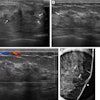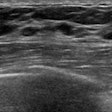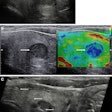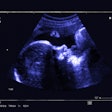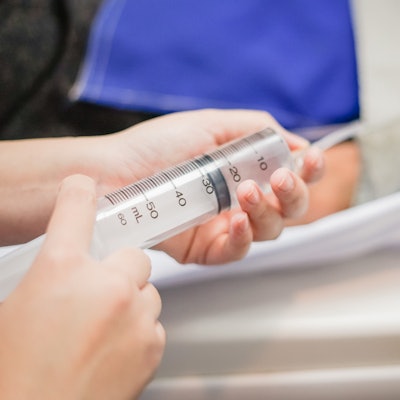
Contrast-enhanced ultrasound (CEUS) can predict treatment failure for bone fractures that fail to heal, according to a German study published August 22 in Ultrasound in Medicine and Biology.
Researchers led by Dr. Julian Doll from Heidelberg University Hospital in Germany found that CEUS can detect perfusion differences between consolidating and persistent nonunion fractures and can predict treatment failure as early as 12 weeks after surgery.
"Our results prove that CEUS can ... predict the outcome of nonunion surgery and that it can do so even earlier [than other methods], at lower costs and with fewer contrast agent-related side effects," Doll and colleagues wrote.
Bone fractures are classified as nonunion when they do not heal after conventional surgical methods. Nonunion fractures occur in 1.9% and 10% of cases, and they often require expensive diagnostics, multiple surgeries, and long follow-up periods. This can put a heavy financial burden on patients, who also suffer from reduced physical well-being.
The researchers said this makes early detection of nonunion fractures "paramount" for better treatment selection. Therefore, they wanted to validate the diagnostic value of CEUS in predicting the outcome of nonunion revision surgery and confirm its significance in bone perfusion diagnostics.
"We hypothesize that patients with consolidated nonunions, 'responders,' have significantly higher micro-perfusion parameters in the CEUS examination as early as 12 weeks after nonunion surgery, as compared with 'nonresponders,' " they said.
The team looked at data from 112 patients, 79 male and 33 female, with long-bone nonunions between 2014 and 2020. Twelve weeks after surgery, patients underwent contrast ultrasound exams, aiming to assess formations in the nonunion gap. X-rays were also performed to determine the progress of bone union.
The group found significantly higher perfusion levels in responders than nonresponders after 12 weeks. Consolidation, a stage of proper bone healing, was achieved within 36 months for 89 patients (responders), whereas 23 patients showed persistent nonunions (nonresponders) and required further surgery.
Persistent-fracture nonunions could be predicted with a sensitivity of 88.7% and specificity of 72.2% in lower-limb nonunions. The study authors said these patients are likely to suffer from persistent nonunion and may benefit from early revision surgery.
For nonunion fractures of the upper limbs, the sensitivity of contrast ultrasound was found to be 66.7% and specificity was 100%. The researchers said these patients will most likely have their fractures consolidate within 36 months.
Doll and colleagues said these results show that contrast-enhanced ultrasound should be integrated into deciding on revision surgery at an early stage and that it could complement current postoperative monitoring strategies of nonunion consolidation.
"Combining information on the patient's history, standard clinical and radiological examinations and microperfusion assessment by means of CEUS can lead to earlier detection of treatment failure, enabling timely revision surgery," the authors wrote.


